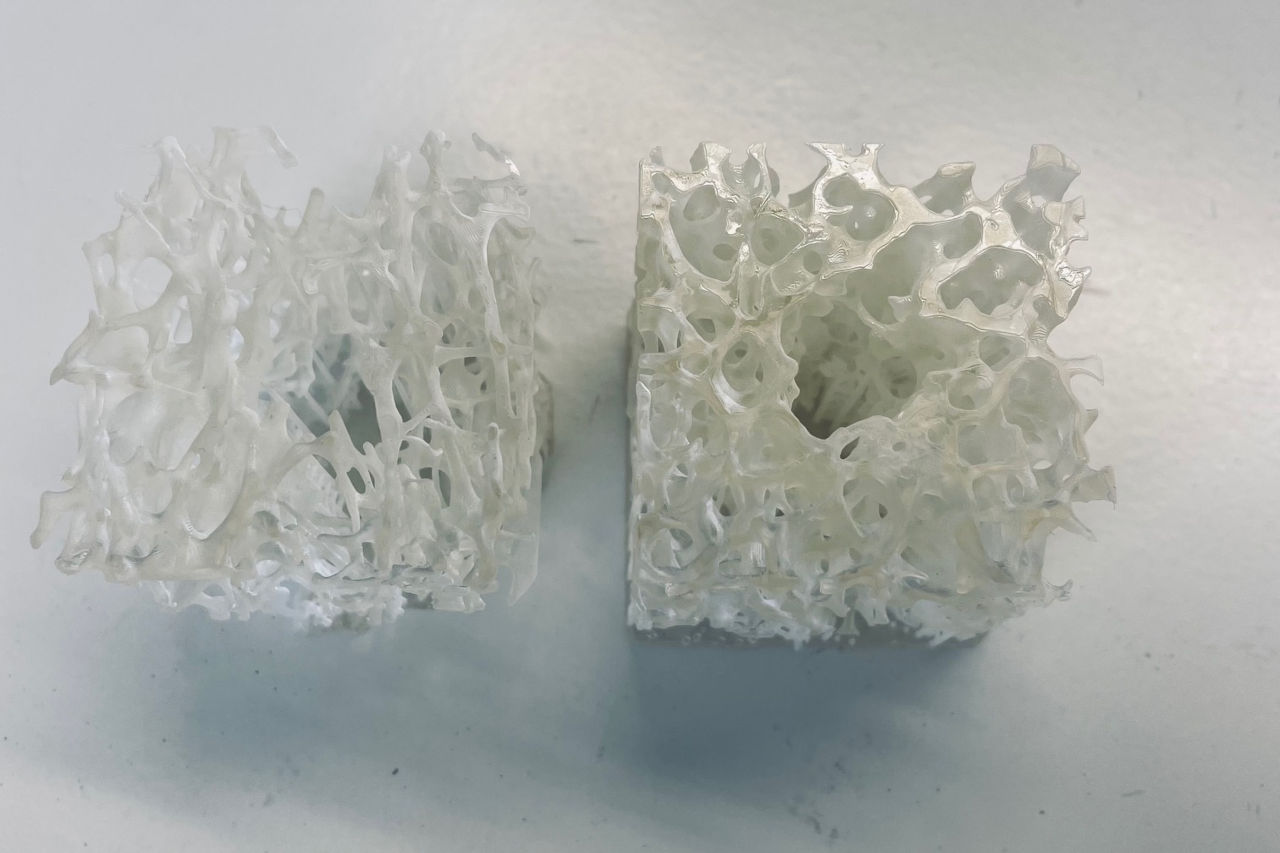Targeted, customized treatment of bone metastases using 3D printing
Aimed at developing materials suitable for repairing bone metastases, the 3DTraitCancer project has resulted in two patents and two start-ups. This project is supported by MUSE as part of its Research Support call for projects.

Bone repair with micrometer precision. This is the level of accuracy achieved by 3D printing of custom-designed implants. In addition to their shape, the structure of the implants must contribute to bone reconstruction by facilitating bone cell growth and resorbing naturally. This objective was the starting point for the meeting between Mikhael Bechelany's team at the European Institute for Membranes (IEM) and Vincent Cavaillès' team at the Montpellier Research Institute (IRCM). "As is often the case in science, an initial meeting gives rise to more ambitious collaborations," comments the latter. For these two researchers, the collaboration takes the form of the 3DTraitCancer project, which aims to develop new implants to treat bone tumors (osteoclastomas, bone metastases from breast cancer, etc.). Bone repair after the removal of metastatic bone areas is indeed one aspect of cancer treatment research. Funding from Muse in 2017 gave them a leg up.
The ideal material
Straddling chemistry and biology, Habib Belaid's thesis has led to the design of the ideal material for these implants: a porous, biodegradable, biomimetic structure. " The cells must be able to attach themselves and multiply easily in this structure, which must then degrade naturally after a few months as the bone regenerates," explains the young doctor. He prints his materials on theIEM 3D printers, then tests them in the IRCM laboratory to first verify that they are non-toxic and then to improve their expected characteristics.
In addition to bone regeneration, these implants should also help prevent cancer recurrence by enabling localized drug treatment. In other words, the porous structure should facilitate fluid circulation for the administration of anticancer drugs. This targeted therapy could make it possible to avoid systemic treatments that are poorly tolerated by patients. In addition to chemistry and biology, this project also involves medicine, with the Montpellier University Hospital and Cancer Institute contributing their clinical expertise, and mechanical engineering, with the Laboratory of Mechanics and Civil Engineering (LMGC). "A network of skills initiated by Muse that promotes this essential interdisciplinarity," emphasizes Vincent Cavaillès.
Two start-ups
Still on the subject of bone repair, research is being conducted in parallel on injectable cements. Bone lesions caused by metastases lead to vertebral fractures that require the injection of cement rather than implant surgery. The results, again obtained during Habib Belaid's thesis completed in 2019 and during Carole Barou's CIFRE thesis, have led to two patents on reparative calcium phosphate cements. One patent covers the local delivery of drugs present in the cement, with two molecules involved in bone regeneration and in the treatment of tumor recurrence. The other relates to a cement with improved mechanical properties and made opaque, which allows it to be easily monitored by X-ray. Following on from this, a meeting with an industrialist led to the creation of the start-up Biologics4life, which is enabling these cements to move into the commercial phase.
While Biologics4life is finding its business model after three years in existence, Habib Belaid is working on launching a second start-up, NextMat3D, this time focused on capitalizing on his research into printed osteomimetic implants. To establish this new company, the researcher will initially adapt the technology to less complex uses than cancer treatment, such as dentistry: in this case, the implant is used to fill a bone defect before placing a dental implant. The future entrepreneur points out that obtaining marketing authorization for dental equipment is also easier and faster than in oncology.